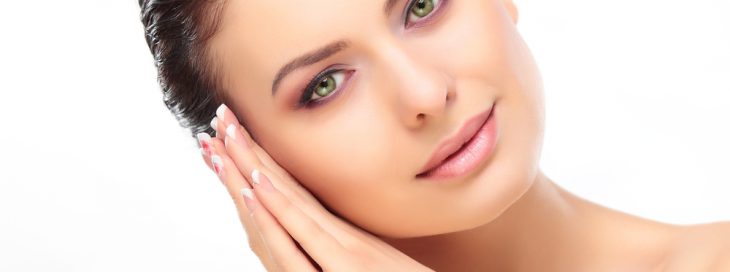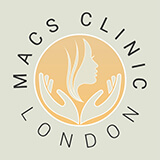
Fat grafting procedure transfers fat from areas in which you have excess fat, such as the outer thighs, and injects it into areas that may be lacking in volume, such as your face, hands, breasts or buttocks. This rejuvenates body features. This safe, long- lasting, well-tolerated procedure produces natural-looking results. Every year, thousands of people undergo successful fat grafting and are pleased with the results.
When to Consider Fat Transfer:
- If you have facial areas that appear creased and sunken
- If you desire more permanent correction than is provided by temporary fillers
- If you wish to improve your body contour, revise scars, fill bodily depressions and rejuvenate your hands and face
Facial fat transfer:
If you have facial creases such as laugh lines, smile lines, and crow’s feet, fat can be removed from your abdomen, thighs, or other areas and be injected into your face. Acne scars and sunken areas of the face, lips, and cheeks can also be filled in. Our surgeon can even use grafted fat to minimize lines between your nose and mouth, correct skin depressions or indentations and minimize forehead wrinkles.
Harvesting:
You and your surgeon will select a site for fat removal and will inject it with a local anaesthetic. He will then create a small incision in the area for fat removal and using a sterile technique, insert a cannula connected to a syringe to carefully extract fat (liposuction).
Preparation and transfer:
Once enough fat is obtained from the donor area, your surgeon will process it to prepare the fat cells for transfer to small syringes that will
be used for fat injection. Purification may require the use of a centrifuge to spin the fat or a filtration process to remove impurities.
Placement:
The area designated to receive the graft will then be prepared. Your surgeon will insert a needle or cannula into the incision point of the site being augmented. The injection needle is usually passed in and out of the areas to be augmented multiple times. Each time the needle or cannula is withdrawn, a line of fatty tissue parcels is carefully deposited in natural tissue planes. This process is repeated until the desired correction has been achieved, creating a grid of grafted fat. Our surgeon may also place a dressing or bandage over the grafted area.
The goal is to help you achieve the most beautiful and natural-looking results, as well as to make your surgical experience as easy and comfortable as possible.
Your initial consultation appointment:
During your initial consultation, you will have the opportunity to discuss what you want to achieve. Your surgeon will evaluate you as a candidate for fat grafting and clarify what fat grafting can do for you. Once he understands your goals, he may suggest additional or related procedures. It is important to be completely honest during the consultation. Bring several photos of yourself at an earlier age; they may serve as a good point of reference for discussing your goals.
It is a good idea to be fully prepared to answer these questions:
- Do you have any medical conditions or drug allergies?
- Are you being treated for any medical conditions?
- Have you had any previous surgeries?
- What are your current medications and vitamin and herbal supplements?
- What is your current use of alcohol, tobacco and recreational drugs?
- What is your history with any noninvasive cosmetic procedures?
- What outcome do you expect from the surgery? What is your chief motivation in undergoing fat transfer?
Your surgeon may also:
- Ask you to look in a mirror and point out exactly what you would like to see improved
- Take photos for your medical record, measure your face and use computer imaging to show you improvements you can expect
- Evaluate your health status, including pre-existing health conditions or risk factors
- Evaluate the elasticity of your skin
- Discuss your options and recommend a course of treatment
- Discuss likely outcomes, including risks or potential complications
- Discuss the type of anaesthetic that will be used
Limitation and Risk:
Fortunately, significant complications from fat grafting are infrequent. This procedure is usually performed without any major problems.
Risks and potential complications of surgery is a subject you should discuss during your consultation. The risks in most surgeries are similar. Some of the potential complications of all surgeries are:
- Adverse reaction to anaesthetic
- Haematoma or seroma (an accumulation of blood or fluid under the skin that may require removal)
- Infection
- Changes in sensation
- Scarring
- Allergic reactions
- Damage to underlying structures
- Unsatisfactory results that may necessitate additional procedures
- Fat necrosis
- Oil Cyst formation
- Calcification
- Undercorrection
- Overcorrection
- Fat embolism
After Care: Ask your doctor how long it will be before you can return to your normal level of activity and work following this procedure. After surgery, you and your caregiver will receive detailed instructions about your postsurgical care, including information about:
– Drains, if they have been placed
– Normal symptoms you will experience
– Any potential signs of complications
More questions about dimple creation surgery?
The purpose of fat grafting is to augment or fill in volume-deficient areas. Commonly grafted or injected areas include the hands, face (including the lips), depressions in the skin (following liposuction and scarring) and the breasts and buttocks (for augmentation). Of course, you must havedonor sites from which fat can be taken. It is important that you do not have any circulation problems, either from a medical condition or smoking.
Fat is harvested from one part of your body, washed and purified, and then carefully re-injected with specially designed needles into the areas that need augmentation. It may be necessary to repeat the fat grafting procedure several times to achieve the desired result. Fat grafting can be explainedas a three-stage process: (1) harvesting (2) preparation of fat graft and (3)placement.
Your own fat may be used to alter your body contour, revise scars, fill depressions created by liposuction or cancer surgery and rejuvenate your hands and face. Common sites for obtaining fat include the abdomen and the flanks (love handles), posterior arms and the hips and thighs. The options your surgeon will discuss with you are:
o Which areas will benefit from fat transfer
o Which areas are best for fat removal
o Whether any other procedures are appropriate
o Fat can be harvested from areas like the thighs and buttocks
o Fat can then injected into the lips and elsewhere on the face
Your only scars may result from liposuction which is used to remove fat from the donor site.
Liposuction incisions are small and the scars are also small and are placed in hidden areas. Sometimes depending on the location of fat deposits on your body, the incisions cannot be hidden. The amount or degree of scarring depends on the surgeon’s technique and your genetic tendencies. Most liposuction scars fade and are barely perceptible over time. Visible scars are more likely when large liposuction cannulas are used and in patients who have darkly pigmented skin. There are two types of marks that can remain on the skin after liposuction. One is a true scar, and the other is known as dyschromia, a dark (hyperpigmented) or light (hypopigmented) spot on theskin.
Your surgeon will provide thorough preoperative instructions, answer any questions you may have, take a detailed medical history, and perform a physical exam to determine your fitness for this procedure.
Your surgeon may take pre-procedure photos.
Regardless of the type of surgery to be performed, hydration is very important before and after surgery for safe recovery and the best outcomes.
In advance of your procedure, your surgeon will ask you to:
v Stop smoking at least six weeks before the procedure to avoid poor wound healing and scarring.
v Avoid taking aspirin, non-steroidal anti-inflammatory medications (NSAIDs: Advil, Motrin, Aleve) and vitamins/homeopathic regimens that can increasebleeding.
v Regardless of the type of procedure to be performed, hydration is very important before and after for safe
Photo Gallery
Patient – 1






